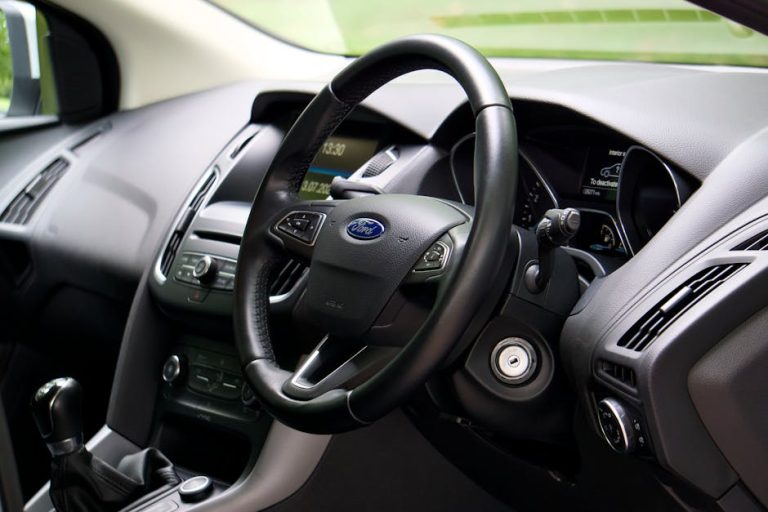It’s 2025 now, and a lot of folks are still, you know, talking about email marketing. And not just talking about it, but figuring out ways to make it, well, do more stuff without needing you to constantly be at the keyboard. This is where the whole concept of automation, for your emails, really steps in, a pretty big deal for all kinds of businesses. It’s mostly just about getting machines to take care of some of the messages, when that makes good sense, of course. We’re going to just kind of walk through what that actually involves, and how it all plays out, even if the word “automation” can sound, you know, a bit complex. It’s not as much of a headache as you might think.
A lot of the time, people just send out emails when they remember or have something new to tell everyone. Which is fine, sometimes, but it’s not always the best way for connecting with people who might buy things from you, or just want to hear more. You need to be there at the right moment. But being there at the right moment for everyone, all the time, that’s just not possible for one person to do, not really. This problem is what automation tries to help with, making things happen in the background so you can focus on other stuff. It’s a way to keep conversations going without constant manual effort, a kind of helper for your outreach.
What Email Marketing Automation Really Is (and Why It’s Not Super Scary)
So, what are we talking about when we say “email marketing automation”? It’s really just setting up a system, typically using some software, to send out emails to people based on certain things they do, or don’t do. Like, say, someone signs up for your newsletter, an automated email goes out saying “Welcome!” without you having to push a button for each new person. Or maybe someone puts something in their shopping cart but then leaves your website, and later on, another email pops up asking if they forgot something. These are the kinds of events that normally trigger an automated message.
It’s all about sequences. You set up a path, you know, for different kinds of customers or people who are just checking out what you do. For example, if somebody clicks on a link about shoes, they might get a series of emails about shoes over the next few days. It’s not magic, it’s just a pre-planned series of communications. It really helps you talk to people in a more personal way, even if it’s the computer doing the actual sending. The whole point is to make the communication feel more timely and relevant to what that particular person is interested in.
This kind of process lets you, generally speaking, communicate with lots of different people at once, but in a way that feels unique to them. It’s a big helper for small businesses trying to keep up, or even bigger ones trying to make sure no one falls through the cracks. It lets you sort of scale your conversations, which is pretty handy. The machine just follows the rules you give it, making sure everyone hears from you when they should.
How This Stuff Gets Set Up (or, the Moving Parts)
Getting email automation going, it involves a few key steps. First, you need some kind of email service provider – like a platform. This is the main tool you’ll use. Most of these platforms today have all the features needed for setting up these automated sequences. You don’t need to be a super coder or anything like that to get started. They usually have drag-and-drop builders, making it quite accessible for a lot of people. It’s considered to be a pretty straightforward process, honestly, for what it does.
Then, you gotta figure out your triggers. These are the actions, or inactions, that start an email sequence. A trigger could be anything from signing up, purchasing a product, clicking a certain link, visiting a specific page, or even not opening an email for a while. It’s those specific points in a person’s journey that you decide are important. Once you figure out what these important moments are, you connect them to the emails you want to send. This part takes a little thinking about your customers, naturally.
After that, you design the emails themselves. These aren’t just random messages; they’re carefully thought out to go with the trigger. A welcome email, for instance, should be friendly and tell people what to expect next. An abandoned cart email might gently remind someone about what they left behind. Each email in the sequence has a specific job to do. You want them to be helpful and relevant, so people actually want to read them and do what you hope they will, you know, eventually. It’s a bit like writing a choose-your-own-adventure story for each customer.
Practical Ways You Can Use It (Some Examples, Real-World Kinda Things)
There are so many ways you can really use email automation, it’s not just for big companies with lots of cash. For one, welcome sequences are really common, and usually pretty effective. When someone new subscribes to your list, a series of 2-3 emails can go out over a week or so, introducing your brand, sharing some of your best stuff, and maybe even a special offer. This helps new people get to know you, rather quickly too. It’s a pretty standard thing to do, generally speaking.
Another widely used thing is abandoned cart recovery. This is for when someone adds items to their shopping cart online but leaves before buying. An automated email, maybe an hour or two later, can pop up, reminding them about their stuff. Sometimes it just takes a small nudge. You could even send a follow-up email a day later with a tiny discount, if you wanted. This normally helps bring back sales that would otherwise just be lost. It’s a pretty useful trick, a real revenue saver.
Then there are birthday emails, which are quite nice and people like getting them. If you collect birth dates, you can set up an email to automatically send a happy birthday message, maybe with a special coupon code. This makes customers feel appreciated and remembered. It’s a small gesture, but often, it helps build a good feeling. Or, if someone hasn’t bought anything in a while, a “we miss you” email can remind them you’re still around. These little touches really do add up for a lot of people. It’s about building a connection, you know.
Keeping Things Human Even with Machines Doing Work
One thing people worry about with automation is that it will make everything feel, well, robotic and impersonal. And yeah, if you don’t do it right, it totally can. The trick, though, is to make your automated emails sound like they’re coming from a real person. Use a friendly tone, avoid overly formal language, and talk like you normally would. Your brand’s voice should definitely come through. It’s important to remember that these are still conversations, just managed by a machine.
Personalization is a pretty big deal here. Using someone’s name in an email is just the start, honestly. Automation lets you send emails based on what a person has looked at or bought before. So, if someone buys a specific type of product, you can automatically send them recommendations for related things they might like. This makes the emails much more relevant and less like generic spam. It’s about sending the right message to the right person, not just any message to everybody.
Also, don’t be afraid to mix things up. Not every email has to be automated. You can still send out regular, one-off newsletters or announcements when something big happens. Automation is there to support your manual efforts, not completely replace them. It’s a tool, you know, to make your life easier and your marketing more effective. It frees up your time so you can spend it on making better content, or figuring out other fun things to do for your business. It’s supposed to lighten the load, not just pile more on.
So, in 2025, email marketing automation is really just a smart way to manage your communications without getting totally overwhelmed. It lets you be there for your customers at all the important times, building those connections, and generally, helping your business grow. It’s not some weird future tech, it’s just a clever use of what we already have, making things a bit smoother for everyone involved. It simplifies the process considerably, which is a good thing for anyone trying to run a business today. Just set it up thoughtfully, and it will do a lot of good work for you, pretty much on its own.
Frequently Asked Questions (FAQs) about What is Automation in Email Marketing
Q1: So, what exactly is email marketing automation in simple terms?
A1: It’s basically setting up your email system to send messages automatically to people based on certain actions they take or things you know about them. Like a welcome email when someone signs up, or a reminder if they leave something in a shopping cart. It saves you from having to manually send each and every email, which is pretty handy.
Q2: Is email automation only for big companies, or can small businesses use it too?
A2: Not at all, small businesses can definitely use it, probably even more so because it helps them do a lot with less staff. Many email marketing platforms offer automation features that are quite affordable and easy to learn for businesses of any size. It’s generally a very accessible tool for many.
Q3: Won’t automated emails sound super robotic and impersonal?
A3: Not if you do it right! You write the emails yourself, so you can make them sound just like you or your brand. By using personalization, like a person’s name or recommending products they’ve shown interest in, automated emails can actually feel very personal and relevant. The key is in how you craft the messages.
Q4: What kinds of things can trigger an automated email sequence?
A4: Lots of stuff can be a trigger! It could be someone subscribing to your newsletter, making a purchase, clicking a link in a previous email, visiting a specific page on your website, or even not opening an email after a certain number of days. You set these rules up in your email software.
Q5: Is it hard to set up email marketing automation for the first time?
A5: It can seem a bit daunting at first, but most modern email marketing platforms have really user-friendly interfaces. They often have templates and drag-and-drop tools that make setting up sequences pretty straightforward. You normally don’t need any special coding skills to get it going. It just takes a bit of planning, usually.










